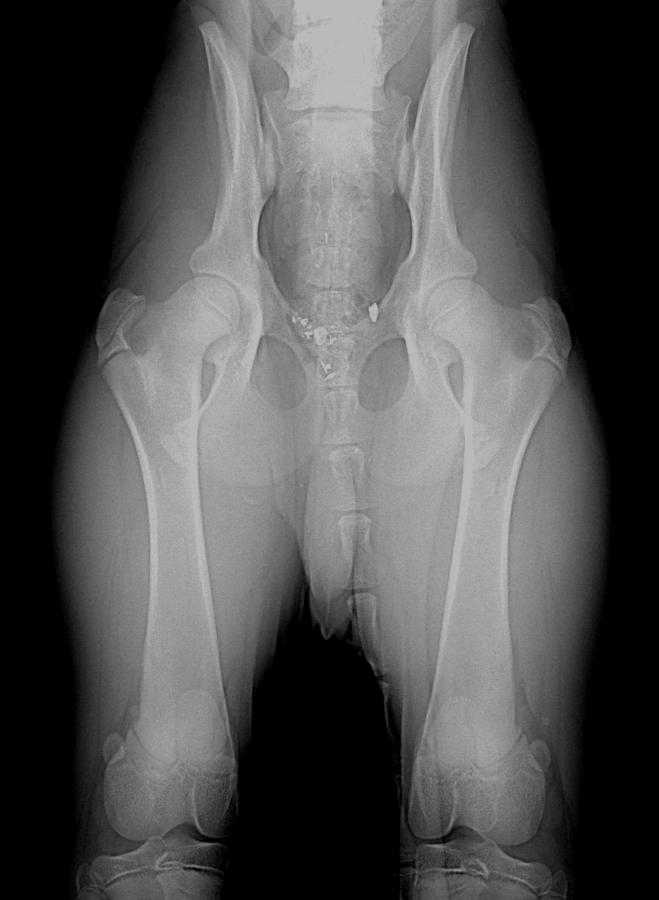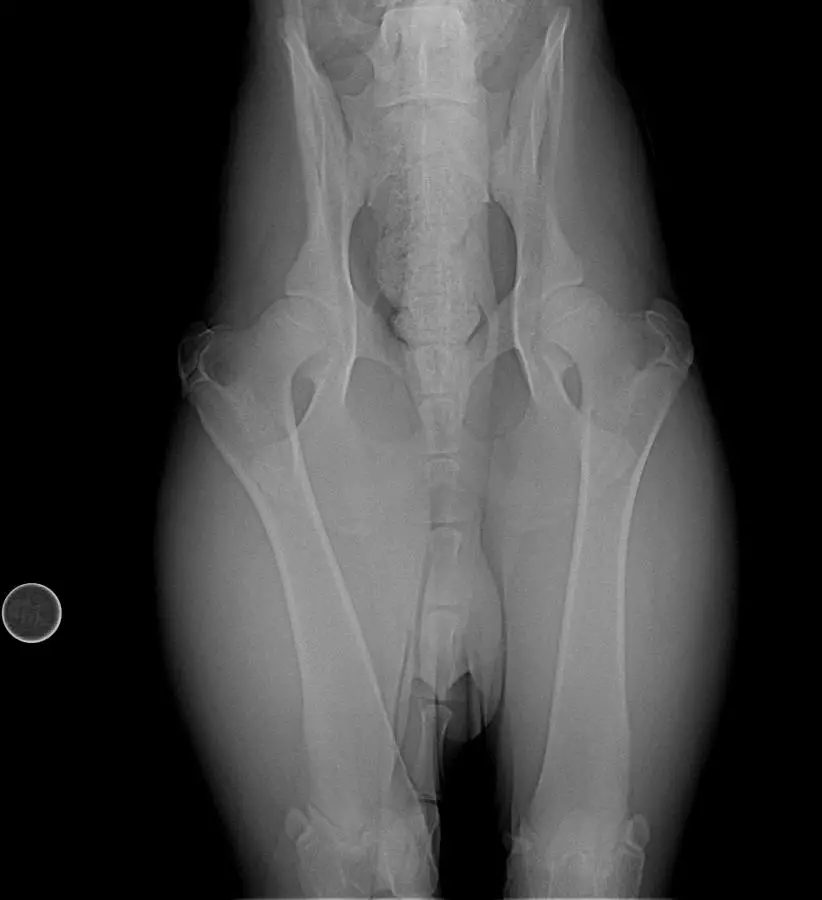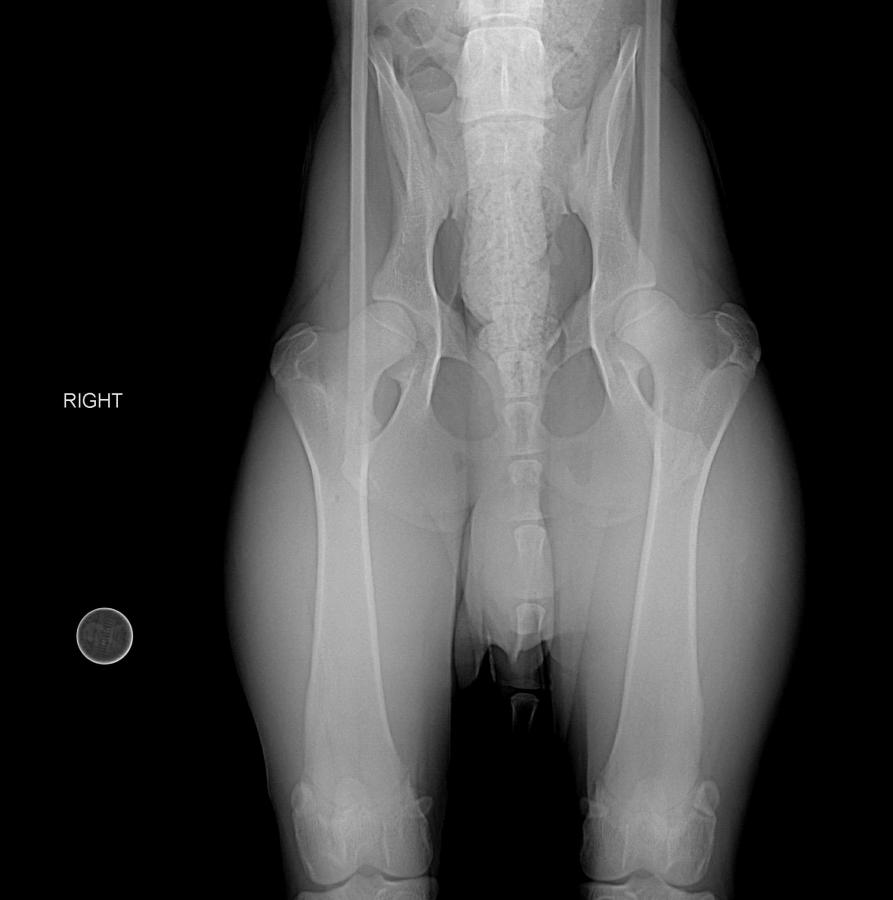
This is a placeholder text
Group text
by MichelleG on 08 December 2015 - 14:12
Thanks to everyone for you replies, we just want to do what is right for this client and the pup of course. :-)
by bubbabooboo on 08 December 2015 - 16:12
Neutering a 5 month old male or female is not right for the pup. It might be what is right for the client if they are inept dog owners. Neither a male or female of any mammal species will develop properly without their sex hormones and lifelong health problems are the result of neutering at early ages. In my GSD I advise never before 12 months and best if after 24 months of age. Early castration affects bone growth and joint formation in male humans and dogs ( females as well ) as reported in the Castrato of Italy who were prepubescent males castrated to enhance their singing voice.
https://en.wikipedia.org/wiki/Castrato
As the castrato's body grew, his lack of testosterone meant that his epiphyses (bone-joints) did not harden in the normal manner. Thus the limbs of the castrati often grew unusually long, as did the bones of their ribs. This, combined with intensive training, gave them unrivalled lung-power and breath capacity.[
by BlackthornGSD on 08 December 2015 - 16:12
by joanro on 08 December 2015 - 16:12
by Sunsilver on 08 December 2015 - 18:12
...the least they could do is learn to tie a proper square knot.
[wipes coffee off screen...]
Joan, that was too funny!
I agree, too early to tell, and tying the legs together did the dog no favours.
The sockets look shallow, but without the legs being tied, it looks like the ball joint could be well-seated. There is hardly any space between the end of the ball and the bottom of the socket, which is how they judge if the joint has subluxation.
Redo at age 2, and in the meantime, low impact exercise, good diet, blah blah blah....
by susie on 08 December 2015 - 18:12
The right side doesn´t look good, but not bad enough for surgery.
OT, but I never before saw an x-ray with legs tied together... learning new things every day...
by Nans gsd on 08 December 2015 - 18:12
by DenWolf on 08 December 2015 - 19:12
The pup's hips are very lax..
Sedation, the positioning, tied up legs, etc.. is NOT causing the hips to be LAX.
The cord in the xray is probably part of the surgical process of neutering.
It is too bad they had him neutered so young, but since that is DONE already, have the owners look into the JPH procedure for the pup.. If he is still young enough, that is the one thing that might actually give him a chance at a normal life..
I don't know enough about the result to post data, but it does seem to have some merit.. and doesn't cost as much, and isnt as invasive..
Would love to hear from anyone who has DONE this procedure, and has data (before/after xrays, etc).
Below for you all I have posted a few x-rays, of NORMAL puppy hips, at the same age/close to it, THAT is what they SHOULD look like, REGARDLESS of how positioned. (nice and TIGHT).
The first is a male GSD, 5 months, nice tight hips.
The second SET is a male GSD, about 6 months, BOTH taken same day, one where the vet had knees pulled in a bit much, we re-shot for a better comparison, and as you see, they are STILL tight in BOTH shots. Nothing we did or tried to do was going to make them "pull out of the sockets" short of tying the dog to a rack maybe.
FIVE month old MALE GSD hips, NO laxity at that age (what you are looking to see at THAT age at the very LEAST)

6 month old male GSD, taken SAME day, slightly different positioning, which does NOT affect the laxity


Also see how the muscle mass can be manipulated to look better, in reality, it is not as good as the first pup I posted. That was what I expected from the GENETICS of the pup's parents. BTW, ALL of these dogs were fed VERY well, premium diets, correctly raised, in my possession from conception to adulthood. Eliminated ALL outside influences and other excuses as to "why" they "developed" hips like these... (or didn't)
GENETICS trumps environment/nutrition, BUT... I absolutely 100% do agree with raising your dogs/pups with EVERY advantage, meaning SET THEM UP FOR SUCCESS in all ways, and not handicap them, when dealing with food/environment.
Bad nutrition and environment will make a genetically bad hip pup worse, but it will NOT cripple a genetically good hip pup.
Figuring out how to better PREDICT these things IS the future... not staying in the past with methods that don't make progress or make too little progess.
If we all SHARE and COMPARE notes as breeders, and accept new things, then we WILL, as a group, make real progress towards IDENTIFYING the types of dogs that carry the types of genetics that produce bad hips.
by Ryanhaus on 08 December 2015 - 19:12
Your vet is sucking you in, you can't undo the neuter,
but you can find a different vet.
Just by neutering him at such a young age
you have set your pup up for all sorts of joint problems,
I tell people to hold off with spaying and neutering at least
till the dog is two years old and the growth plates have closed.
Here's an article you may find interesting....
http://www.dogs4dogs.com/blog/2015/02/03/spaying-and-neutering-new-warnings-about-health-problems/
by TIG on 08 December 2015 - 19:12
Den Wolf - Pups of different pedigree lines often develop at different rates. What was normal for your 5 months pups well may not be normal for a line that matures later.
OP my old vet was a reader for OFA ( a tough one) for a number of years. He would tell his clients to not bother with any xrays done before the age of nine months that due to variability in growth rates and the fact that such heavy duty growth is going on during that period there really was no reliability to the xrays tho the general rule of thumb was if they were good there was a better chance of staying good but if there were issues - they very well may resolve. The fact the pup shows good muscle mass speaks to hope for the latter since that is one of the biggest markers of good hips. I can not see the xray and thus the ligature (OMG) but it tells me 1. the vet does not have a clue about how to do a proper xray so 2. do not trust his opinion or the xray.
Keep in mind at this age puppies are going thru as phenomenal growth change from pup to the juvenile adult form. I have literally seen pups where one leg was higher than the other today and tomorrow the other one had caught up. They go high in the rear down in the front, sprout teeth and eat like a horse to feed all that growth. Along comes a vet who apparently lacks even the basic understanding of a dog's growth phase because he's willing to do a neuter that will take away the hormones that are essential to this and closing the growth plates when bone formation is done.
In 50 plus years of owning GSDs can not tell you the # of times I have heard the story of vets diagnosing GSD pups as having HD that were completely normal - some didn't even bother with the xray. It was always always followed by the pitch that your dog must have this expensive (generally 5k a hip) operation or it will live in pain for the rest of it's life.
BTW for the laxity camp. Penn Hip never did the longitudional studies they promised when they ran to the market w/ Penn Hip to make money. The original work was done w/ 65 dogs of multilple breeds (and as you know hip structure is very breed dependent - what will pass in a doxy or bulldog probable would not in a GSD) so very statistically thin - thus the promise to do the longitudinal (generational)studies to prove that laxity is a determining factor in HD. Studies not done - once again we have bad science accepted due to people wanting a quick fix or label. G.K. Smiths work was based on Bardens wedge xray of the 60s where Barden claimed he could predict by the age of 6-12 weeks ( later changed I believed to 12-16) wh/ dogs would turn out to be dysplastic. Whole litters were put down based on this snake oil affecting the genetic diversity in our breed until folks realized they had been sold a bill of goods. The laxity score has been a moving target since the day PennHip started and there is no public db that allows you to search dogs scores and production record. For example I know an ofa good bitch w/ a poor laxity score who never developed any symptoms herself and lived to a healthy 14 and was a stellar producer of good hips. I am not saying laxity does no play a role for some dogs. I am saying we just simply do not have enough information yet to prove that and certainly to prove that it is the one and only determining factor. I am saying Penn Hip has not helped either by the choice not to complete the research studies. Current research actual shows that HD is more likely to operate in a threshold pattern like epilepsy where multi factors are involved but the diease does not express until a threshold # of factors are present.
Even if this poor pup should end up w/ HD in the vast majority of case NO surgical intervention is necessary. Dogs don't read xrays. The dog will tell you if its in pain or not. Over my lifetime I have had several dogs w/ bad hips - some very very bad and not a one of them were "affected". They lived happy athletic lives generally until age13 or 14 with the most intervention necessary on one dog in old age the occasional arthritis aspirin on cold damp mornings but heck I find I have to do that for my self these days. If he shows discomfort I would highly recommend these days SAMe which can be purchased at Costco at a cost of $15 a month. Excellent for joint problems - kept me up and walking for 10 years with 2 bone on bone knees so I know of what I speak. Very safe- can also get a chewable version from Nutramax but much more expensive.
As far as doing right by the people if he was bought as a pet he will function perfectly fine as a pet aside from anything they have created with the early neuter so imho there is nothing required to "do right".
Contact information Disclaimer Privacy Statement Copyright Information Terms of Service Cookie policy ↑ Back to top




